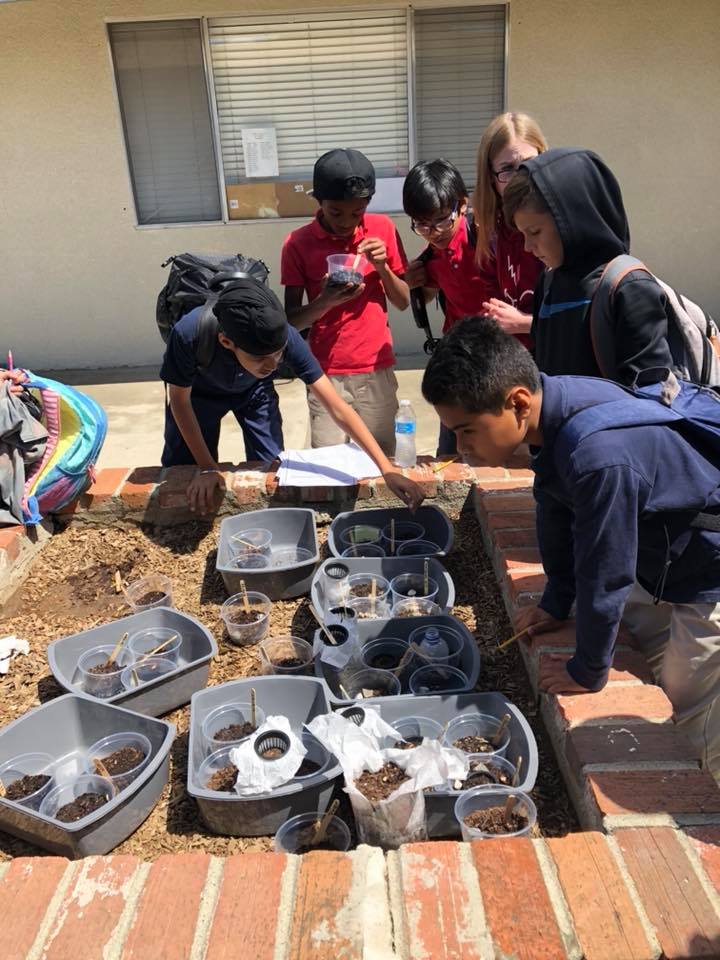
With the promise of warmer temperatures and longer days ahead, April puts a spring in our step and reminds us that Earth Day is right around the corner!
From learning about the science behind global warming to discussing how to be a sustainable consumer, there’s no end to teachable topics about good Earth stewardship. And when it comes to making a real-world impact through projects, age doesn’t matter; it’s all about how you apply and share your knowledge with the community.
In anticipation of April 22 (or any time of the year), we’ve scouted out four ways that students can show what they know through Earth Day projects and get others motivated to make a change.
4 Innovative Ways to Share Earth Day Projects
Create a Video Animation (Georgetown Middle School)
An animated video is a fun way to illustrate a complex topic in a simple but engaging way. As a final product for the Scale Visualizations Project, a 6th grade student at Georgetown Middle School created this video animation that explains how gravity influences motion in our solar system.
An animated video, using a tool like biteable.com, is a great way to show how things work — such as how a compost pile forms or how rising carbon dioxide levels in oceans affect marine life.
Grow a Garden (Aspen Valley Prep)
With some good soil and sunshine, growing a garden at school is a hands-on way to make a lasting and sustainable impact on students, teachers, and families — today and for years to come!

If space is an issue, there are solutions for growing a garden in small areas. Try growing plants hydroponically in an open window, or cultivate plants around the school to bring in more green and keep the air clean.
Film a Documentary (Magnolia Public Schools)
Aspiring filmmakers can create a documentary to highlight an Earth-related topic that they want others to know more about. In Ms. Elizabeth Suarez’s 7th grade class at Magnolia Science Academy in Los Angeles, California, students created a documentary as part of an NGSS-aligned unit on ecosystems, interdependence, and human impact.
Students picked a topic, researched, then turned their knowledge into a mini documentary — a great way to inform and inspire change. Try creating a video with free and simple video editing software, like Windows Movie Maker or iMovie for Mac.
Host a Science Fair (Pasadena Independent School District)
Is it just us, or do science fairs never get old? Opinions aside, science fairs are a great way to have students interact with the community and demonstrate their learning. At an elementary science fair in Texas’ Pasadena Independent School District, a student shows the effect of air pressure by heating a can and then placing it in a bucket of cold water.
Try turning your next science fair into an innovation fair, where students create and showcase Earth-friendly solutions to current environmental issues — from sustainable energy resources to overpopulation.
Summit Learning Projects about Earth & Environmental Impact
If you haven’t had the chance, explore Summit Learning’s Earth and environmental impact projects by grade-level. Find others in the Summit Learning curriculum library.
- Be An Earth Superhero (Science 5)
- Global Summit (created by Kentucky for History 6)
- Shrinking the Human Footprint (Science 6)
- Sustainability (AP Environmental Science)
- Personal Impact Project (AP Environmental Science)
- SimCity (AP Environmental Science)
See other student passion projects and read about students’ project-based learning experiences on the Summit Learning Blog.

